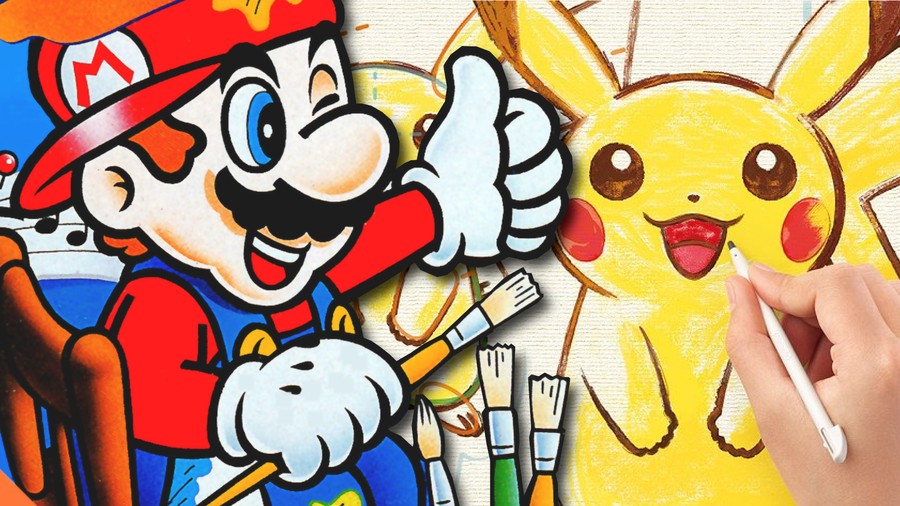
Between the Super Mario Maker games, Miitopia, and now the soon to be released Game Builder Garage, the last decade has seen Nintendo embrace the creativity of its players to produce fun content for all to experience. It’s amazing to see the creativity of the communities that form around these games — whether they're crafting incredible characters in Miitopia's expanded Mii Maker tool or designing intricate courses in Super Mario Maker 2 — but for Nintendo offering creative suites and platforms to players is actually nothing new.
The ease of access to online sharing and social media has made it simpler for players to share their creations, and this has resulted in an explosion of games that foster and thrive on creativity. But even going as far back as the 1980s, Nintendo has been looking at ways to let their players get creative — in this article, we wanted to highlight some of the best.
Let's start with the Family BASICs
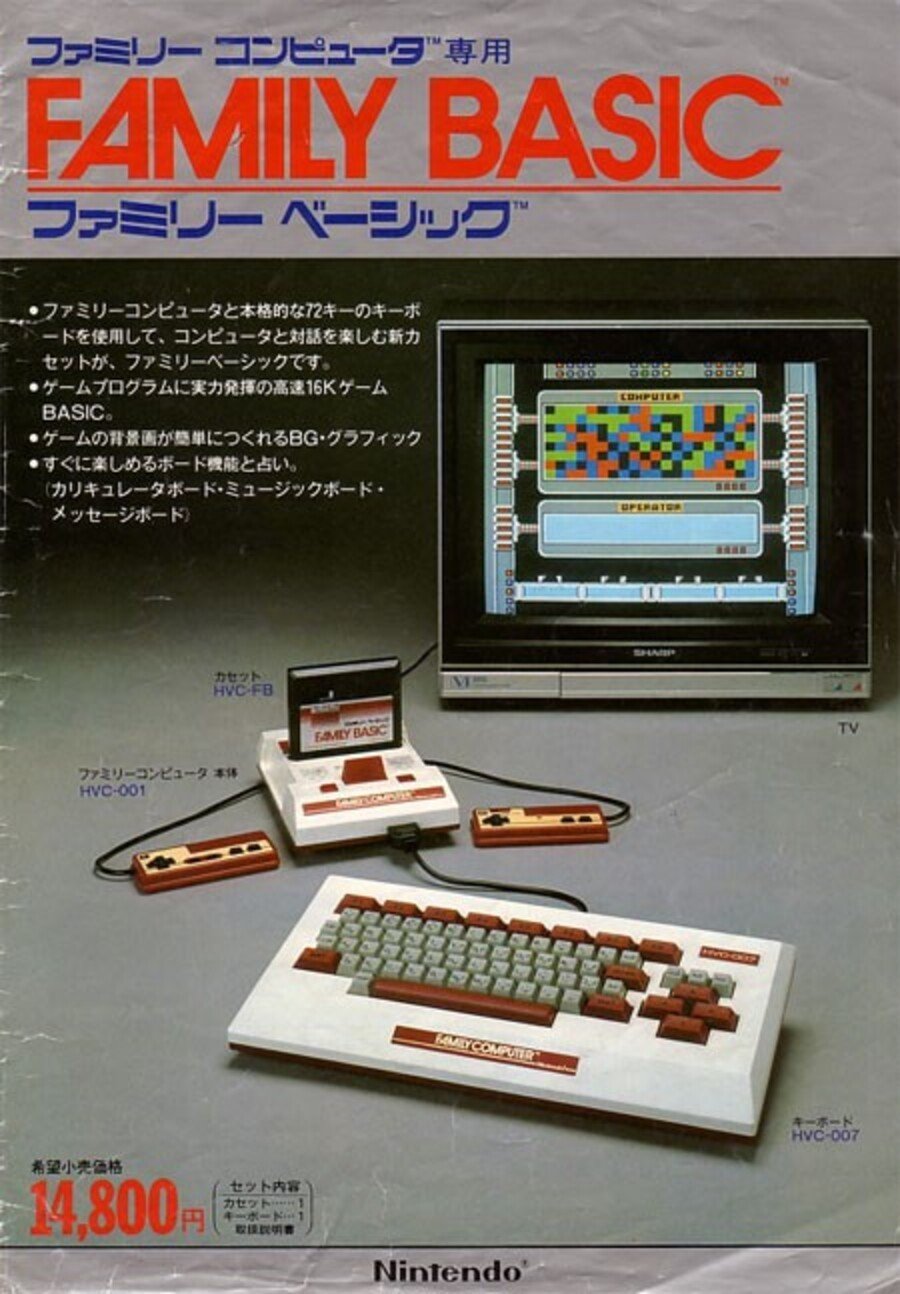
What better place to start than at the very beginning: the Nintendo Entertainment System, or in this case Japan's Family Computer specifically. In 1984 Nintendo would partner with everyone’s favourite defunct bumblebee, Hudson Soft, and Sharp Corporation to release Family BASIC, a piece of software that allowed Japanese hobbyists to program software through the Famicom and save it to specialised cassette tapes.
The title combines the name of the console with BASIC, a programming language commonly used in the '70s and '80s. Family BASIC was literal game development software, running on the 8-bit console. The program was pricier than normal, in part due to it coming with its own keyboard that functioned as the controller. The game was commercially successful and spawned two revisions, but it was a bit cumbersome to use; no doubt Game Builder Garage has been built to be a smoother experience for the user.
While nothing else on the system comes as close to developing entire pieces of software, Nintendo did release what it dubbed the ‘Programmable’ series of games which used the Famicom Data Recorder to save data to cassette tapes. These titles had customisable features included, often allowing players to make their own levels in the game and play them. Only three games were ever released in this series, though — Excitebike, Wrecking Crew and Mach Rider — and this functionality was limited to Japan. We imagine that even most Japanese players forgot they had this feature.
But no one could forget the next game, though.
Mario Paint palettes
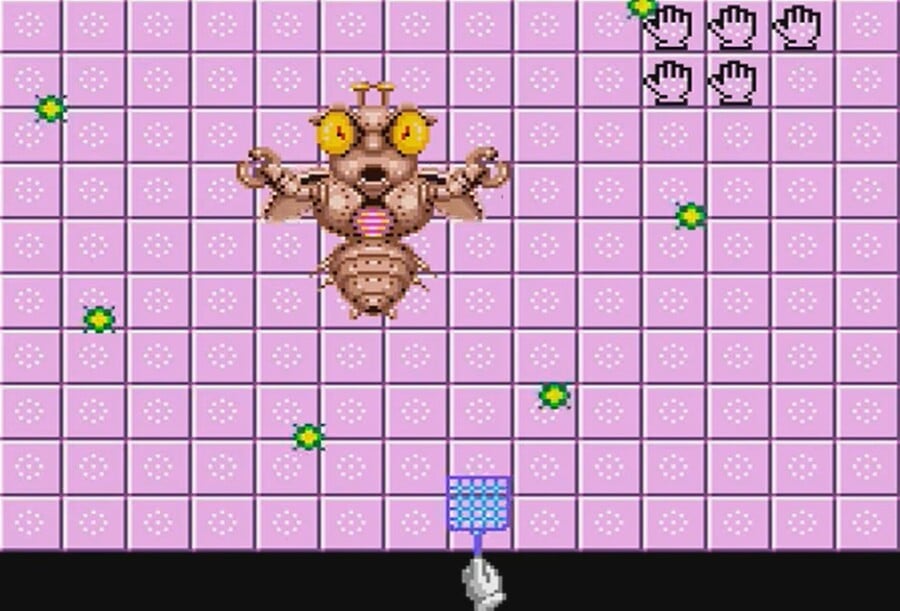
Mario Paint needs no introduction. It is an absolute classic of the SNES library, selling 2.3 million units, and is often the go-to game when people think about Nintendo giving players 'creative' control.
It wasn’t game-making software this time, but instead a tool that allowed players to create drawings and music using the bundled SNES mouse. While its features were simple, it left a lasting legacy that inspired not only Nintendo with many of its future creative games – WarioWare: D.I.Y. and, of course, Super Mario Maker, for example – but also fans who have built up a dedicated community around the built-in music maker, developing incredible remixes with the game's basic sound effects.
While most players might think it ends there, those of you who read our history of the Mii article should also be aware of the Mario Artist line of games, sequels to Mario Paint that launched on Nintendo 64DD.
Exclusive to Japan, this series gave players access to even more tools to let the creative juices flow: Paint Studio was basically an upgrade to Mario Paint, complete with its own N64 Mouse; Talent Studio was a Windows Movie Maker type affair where players made in-game characters and animated them into short movies; Polygon Studio was a simple 3D model maker with 3D environments to explore; and Communication Kit allowed players to transfer their creation across games and even upload them online.
It was a full suite of simple creation tools that could even connect to outside peripherals like the Game Boy Camera. The only thing that was missing was a music creation tool, but Nintendo had something in the pipeline for that particular creative outlet.
Jam with the Sound Fantasy
While Mario Paint had a music maker, it was primarily focused on visuals like art and animation. But following its success, Nintendo began working with game designer Toshio Iwai on a SNES game specifically around music, called Sound Fantasy.
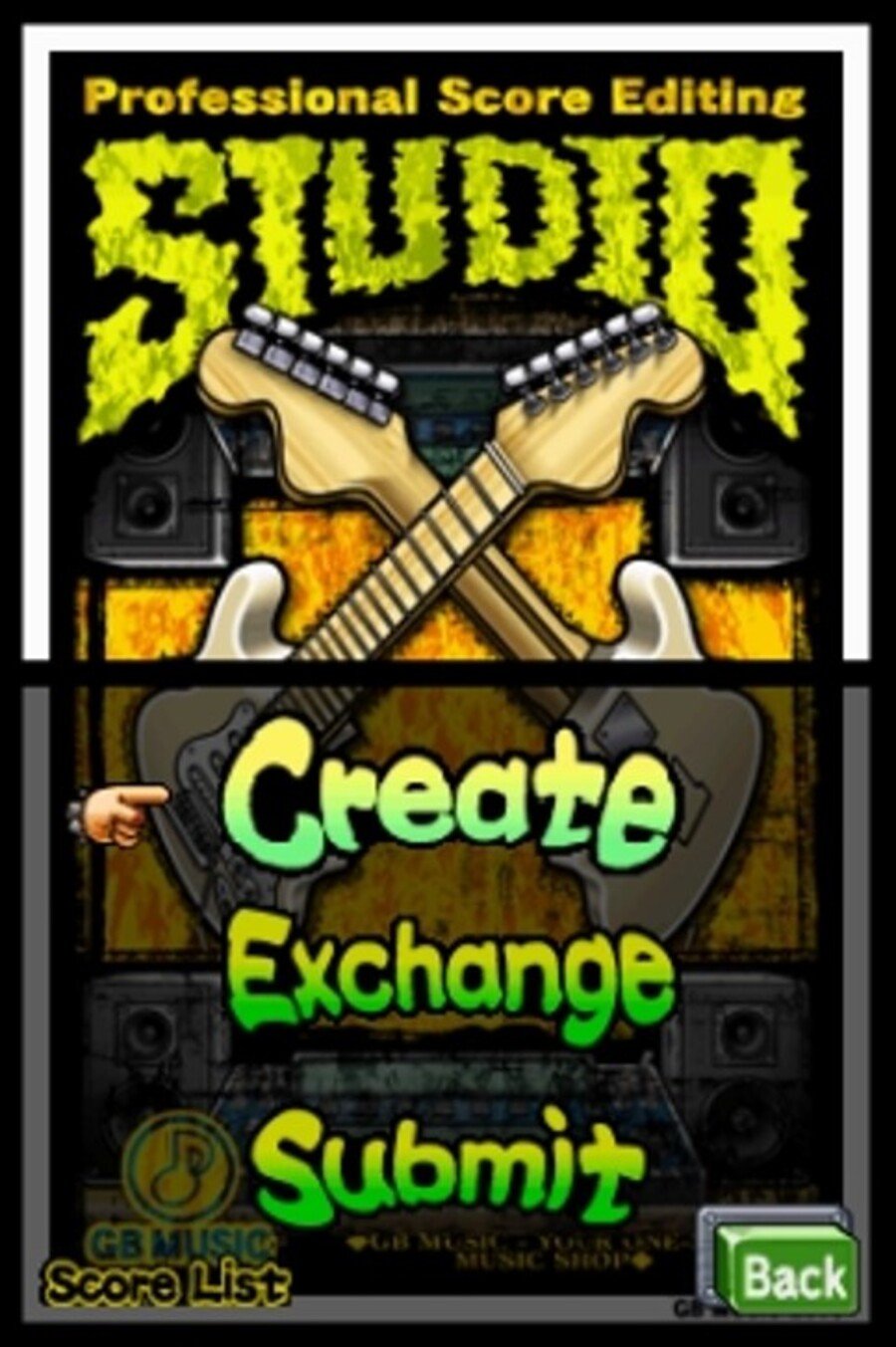
Described by media outlets at the time as a “music-focused version of Mario Paint”, the game — which you can see in action above — was all set to launch in 1994 but despite being completely finished, it was cancelled. Iwai would go on to work on other non-Nintendo games and a decade later he would return to make the experimental Electroplankton on the Nintendo DS, another off-the-wall music-making game.
Despite Sound Fantasy's cancellation, Nintendo wasn’t going to give up on enabling fans to make music. The company began work on Game Boy Music, a music making tool for the Game Boy Color. This project was eventually moved to the Game Boy Advance, but due to the system's audio limitations and lack of buttons — required to be able to 'play' various instruments — it was eventually pushed onto the Nintendo DS and released as Daigasso! Band Brothers, known in Europe by the title of its 'DX' sequel, Jam with the Band.
Released in Europe on 21st May 2010, Jam With The Band was an impressive little music/rhythm/composition game that enabled you to — you guessed it — jam along to 50 pre-installed tunes and program your own versions, too. Unfortunately, it never released in North America.
There was also Wii Music but we don’t talk about Wii Music. If you don't remember, well done for having scrubbed your memory so thoroughly! If for some unknown reason you wish to relive the horror, watch our recap of E3 nightmares to get a reminder of Nintendo’s E3 2008 presentation.
And more...
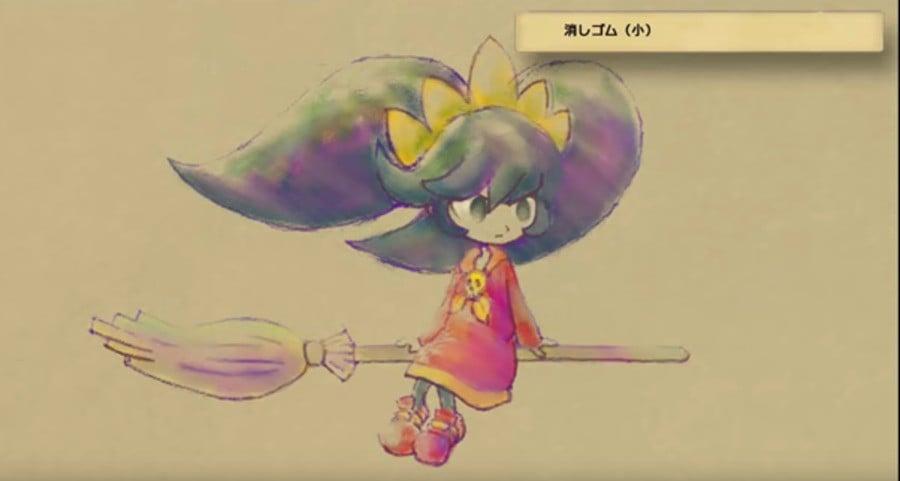
And that almost brings us to the modern day. Nintendo experimented with a few more creative-focused games like the awesome Photo Dojo, a fighting game on the Nintendo DSi that let players make a simple 2D fighting game using real-life photos to create stages and characters. Flipnote Studio was an impressive animation creation tool that also began life on the DSi before migrating to 3DS, and had seen some incredible animations spawn from it. And who can forget Art Academy, a series that lasted six titles and crossed over with both Pokémon and Disney to teach budding artists how to draw their favourite characters.
Nintendo has given us over 35 years of opportunities to get creative on their platforms, whether that’s making music, art, animation, movies and even games, and from what we've seen so far Game Builder Garage is looking to be one of the most in-depth and exciting creative tools yet. Switch already has some impressive third-party titles such as SmileBASIC 4, Fuze4 Nintendo Switch, Korg Gadget and RPG Maker, and its great to see Nintendo itself continue to expand its roster of software that lets players go wild with creative freedom.
GBG is, of course, closely related to its predecessor, the Nintendo Labo Toy-Con Garage, and if the creativity of that mode is anything to go by, we should all look forward to playing some excellent fan-made games in the near future, all thanks to the power of Nintendo.
Yep, we're still playing with power.





Comments 23
I quite liked Wii Music. Granted, I was young but I probably spent more hours playing that than games like Mario Kart Wii and Twilight Princess.
would love to see a new Mario paint for switch. fly swatter game and all. and sharing your creations with others would be nice.
There's gonna be a rush for the first person to make the fly swatter game in Game Builder Garage, isn't there?
Loved both mario makers with all my heart.
Holy cow, I never realized how much potential the music maker dealio in Mario Paint had until watching that video of "Africa". Reminds me I wanted to try that kind of thing in Mario Maker 2!
I really enjoyed Wario Ware DIY-I think that fits here too
@nessisonett I loved Wii Music, it was not making real music of course, but it was fun to play and even more fun with friends!
I also enjoyed Art Academy, but sadly we probably will never see it again as it need proper touchscreen with stylus and the one on the Switch is not good for that.. (unless they release a probably expensive drawing tablet accessory..
@mattesdude This was also a really good programming oriented game!
I'm a massive fan of all sorts of content/game creator stuff, over the years I've been working with RPG Makers, Zelda Classic, Mario Maker, SRPG Studio (my personal favorite) and did some stuff on Warioware DIY as well. I also just heard there is sort of a Wizardry creator thing on the works for Steam so I'm definitely looking forward to that as well.
I'm a bit easily distracted though and I've never been able to REALLY finish anything I started sadly but it's just fun for me to mess around with things, in a way game creators are sort of like the ultimate open world games.
I like to think Mario Paint is the reason I'm a graphic designer. Much as I love Zelda, the former is objectively the best game on the SNES.
I may be a tad biased.
Good ol Mario Paint, my brother and I used to create full on symphonies on the game. Really hope the Garage builder game has a similar feel for my kids!
@MusicalFeline Sadly the video there does not portray Mario Paint's built in music maker. That's a windows program. The in-game music maker is much more limited.
HEY! HOHOHO! YA! HO HO HO! HEY! HOHOHO! YA HO HO HO! Mario Paint! APPLAUSE
Mario Paint is what made me realize I wanted to make my own character sprites for games. I can hear that pleasant music while animating with those extremely limiting frames in my head even now.
How is Warioware DIY not mentioned here
WarioWare: D.I.Y. was great and I had spent a fair amount of time throwing together some games, most of which were turkeys, but there were a few gems along the way, and well as some concepts that failed entirely (such as a game that required you to compose a grammatically correct sentence, and a Tic-Tac-Toe game).
My major disappointment DIY though was that there was no option to include custom sounds (the DS has a microphone for crying out loud!) or photos. I would have bought a DSi solely for WarioWare D.I.Y. if it included camera support, but alas... (I stuck with my still-trusty DS Lite until the release of the 3DS).
A sequel with customisable motion controls would be bloody amazing, though I would rather Nintendo held out until they produce another console with a microphone and camera. But more than that, I want a proper brand new WarioWare game on Switch or its successor. There are so many possibilities with the Joy-Con (especially the oft-neglected IR camera and HD rumble) and it's a travesty that there hasn't been a new installment yet.
@PassPose : It is, but only briefly.
....I feel like Mario Paint should get a sequel on Switch, bundled with a wireless mouse for the Switch. Just imagine a Mario Paint game on Switch with realistic art visuals, actual paint, crayons...markers...just, go all out. Bring back the flyswatter game, the music maker....cram little bizarre and silly secrets everywhere.....AND DON'T CALL IT NEW MARIO PAINT! >:c
@Silly_G I forgot about WarioWare DIY, really wished they would give us another one. The game was pretty great, but I felt like it was limited back then. Like, you couldn't create the same quality that you'd get from the normal WarioWare game. >.<
Does Game Builder Garage have a music making feature?
They forgot to include the level editor N64DD expansion for F - Zero X, "F-ZERO X Expansion Kit," where you could make levels, edit cars, and it added 12 more tracks. Seemed like it should be here, I guess.
@westman98 Apparently not, and no way to record or import audio, which....bothers me.
@Joeynator3000
That's a shame
That Toto Africa remix on Mario Paint reminded me of how versatile the music creation features in that game were.
Photo Dojo is awesome!
Tap here to load 23 comments
Leave A Comment
Hold on there, you need to login to post a comment...